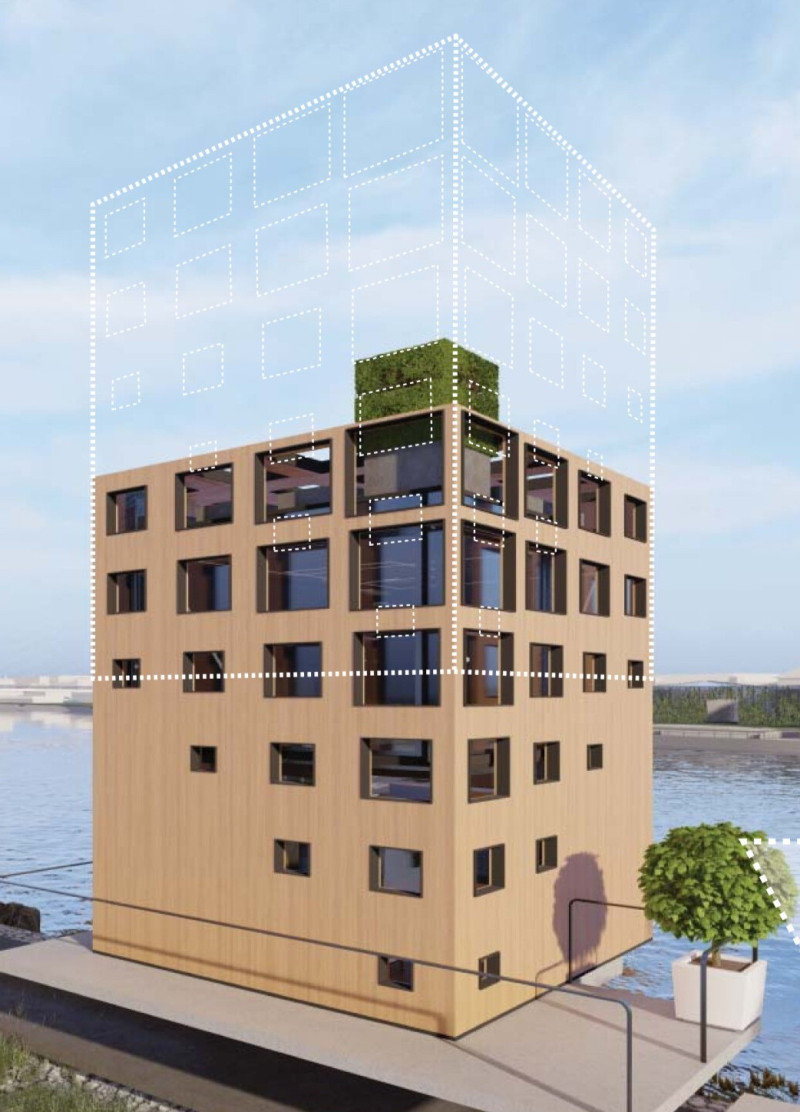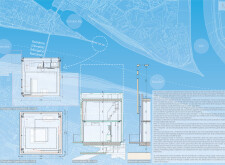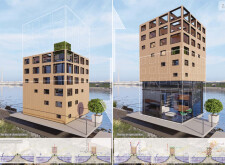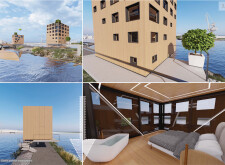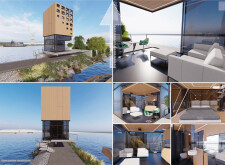5 key facts about this project
### Overview
The Micro Home is located in Komárom, a town situated along the banks of the Danube River, marking the border between Slovakia and Hungary. This design addresses the specific geographical and climatic challenges of the area, embodying contemporary architectural principles such as adaptability and sustainability. The intent is to create a living environment that harmonizes with nature while accommodating various user needs.
### Spatial Strategy
The architectural framework is centered on a multifunctional living space that responds dynamically to environmental conditions. A hydraulic mechanism allows different sections of the building to open or close according to usage demands, creating a flexible environment that supports a range of activities. The design incorporates the “stack effect,” optimizing air movement created by temperature differences, which enhances natural ventilation. The strategic orientation of the structure further facilitates passive heating and cooling, effectively reducing energy consumption while enhancing occupant comfort.
### Materiality and Sustainability
Materials play a pivotal role in achieving both aesthetic and functional goals in the Micro Home. The exterior façade is primarily clad in wood, establishing a warm atmosphere, while the lower section utilizes glass to connect the interior with the surrounding landscape and maximize natural light. Aluminum frames provide structural support and durability, complementing the warmth of the wood. Insulated panels enhance thermal efficiency, contributing to the building's sustainability, alongside a concrete foundation that ensures stability. An on-site hydropower system also reflects a commitment to renewable energy sources, reinforcing the project's ecological sensitivity.
The design integrates local materials and construction techniques, maintaining a dialogue with traditional practices while presenting a contemporary form. This approach not only respects the local context but also serves as a model for future developments in comparable geographic settings.


